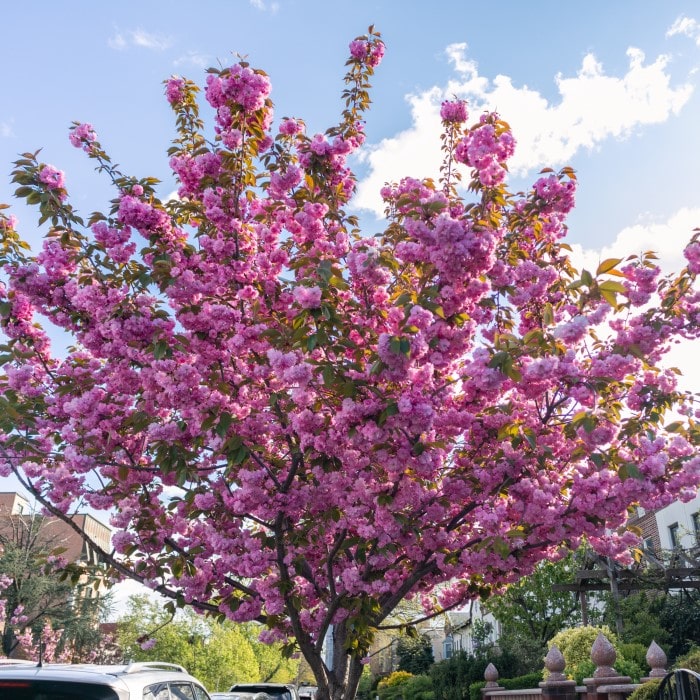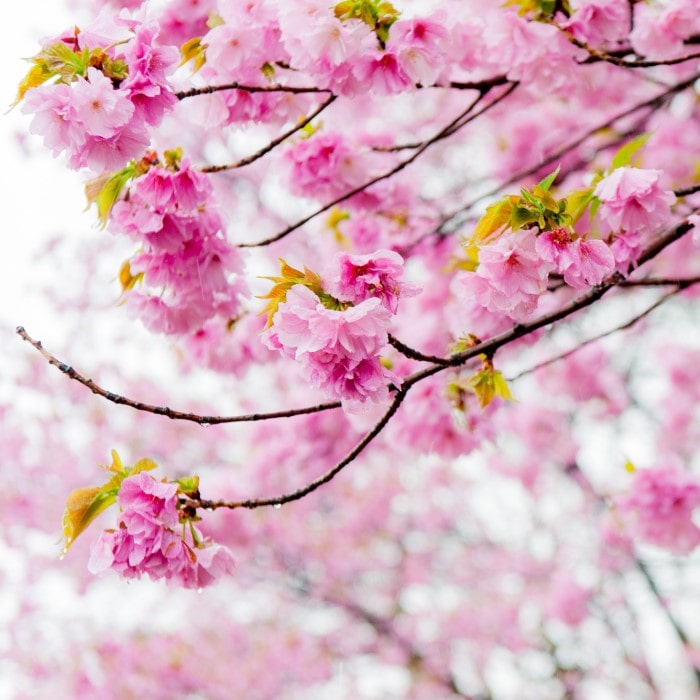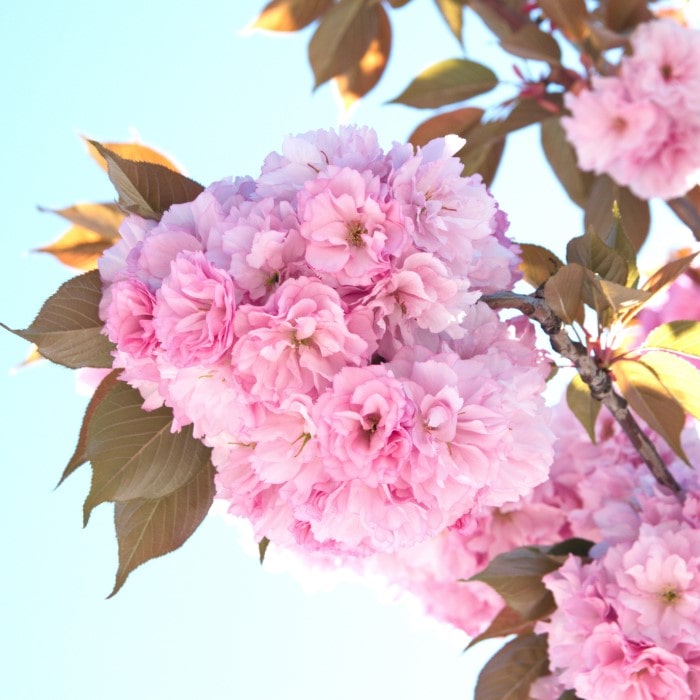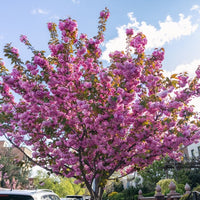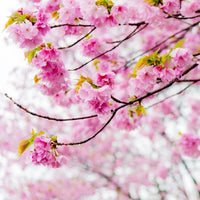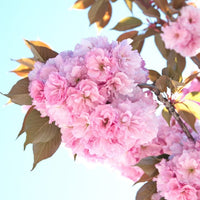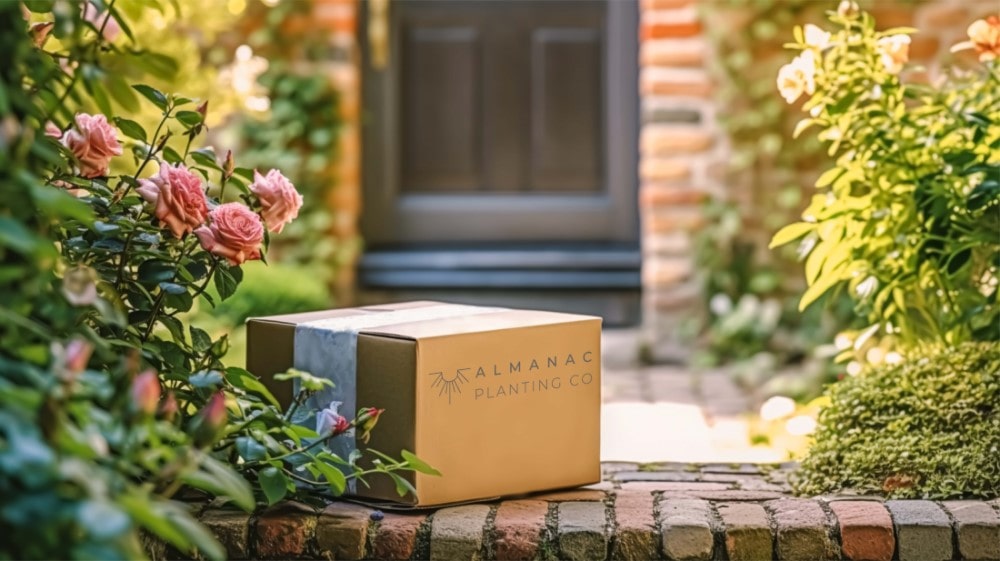Uses: Semi-Compact Deciduous Flowering Tree
Benefits: Prolific double deep-pink blooms! Perfect for lining a driveway or as an accent piece in your yard or garden! Attracts butterflies and pollinators! Low-maintenance.
USDA Hardiness Zones: 5 - 9
Sun: Full sun to partial shade (Prefers Full Sun)
Life Cycle: Perennial
Mature Height: 25' - 30'
Mature Width: 25' - 30'
Bloom Season: Spring
Growth Rate: Moderate
Summary
The Kwanzan Cherry Tree—sometimes called the Kanzan Cherry Tree, and the Sekiyama Cherry Tree; and commonly referred to as the Japanese Flowering Cherry Tree—is a semi-compact deciduous flowering tree. It's best known for its abundant springtime blooms of showy pink flowers!
Considered a shade tree by some, Japanese Flowering Cherry is known to cast a light shade that's cooling but not heavy enough to prevent grass from growing underneath it.
It's famous for producing pendulous clusters of double flowered, deep pink blooms just prior to the formation of leaves in the spring, with each flower having between 20 - 30 petals! Check out our Yoshino Cherry if you'd prefer a white flowering cherry tree.
Branching is attractive, upright, and vase-like: perfect for lining paths, driveways, and as an accent piece for yards and gardens! Birds love making nests in this tree!
New growth wood often has a lovely bronze-red shade to it.
Care
Japanese Flowering Cherry Care
Provide full sun or partial sun. Full sun is best, and will yield the heaviest blooms! Too little light will cause growth issues.
Fertilization is suggested, especially if soil is poor. Our slow release fertilizer is a great option. We recommend that fertilizations be applied in the spring.
Does best in soil that's moist, slightly acidic, and well draining. Does not thrive in dry soil!
Pruning and trimming is typically not required, although it may be done to promote desired shaping. Any heavy trimming should be done shortly after the tree has fully finished flowering.
Water regularly, especially after planting prior to establishment. Attempt to keep soil moist, but not wet. It's suggested to place 2"-3" of mulch under this plant to help retain a light degree of ground moisture and to prevent the growth of weeds around the base.
Size
Size of Japanese Flowering Cherry for Sale Online
The Prunus serrulata 'Kwanzan' that we sell online will ship in a greenhouse grade grow pot. Each plant will be appropriately sized for its pot. Please contact us with any specific questions.
Size of Japanese Flowering Cherry When Mature
Prunus serrulata 'Kwanzan' will often reach mature heights and widths of 25' - 30'.
Additional Information
What is the botanical name of Japanese Cherry Tree?
Its botanical name is Prunus serrulata, with the addition of one of the following several synonymous cultivars: 'Kwanzan', 'Kanzan', and 'Sekiyama'.
Toxicity and Risks of Japanese Cherry Tree
Prunus serrulata 'Kwanzan' is considered toxic to both people and pets!
Its toxicity is a result of the fact that all parts of the plant, with the exception of its ripe fruit, contain cyanide. It should be noted that although the fruit itself doesn't contain cyanide, the seed inside the fruit does contain cyanide.
Signs of poisoning include trouble breathing, bright red gums and/or lips, shock, dilated pupils, nausea, and death.
